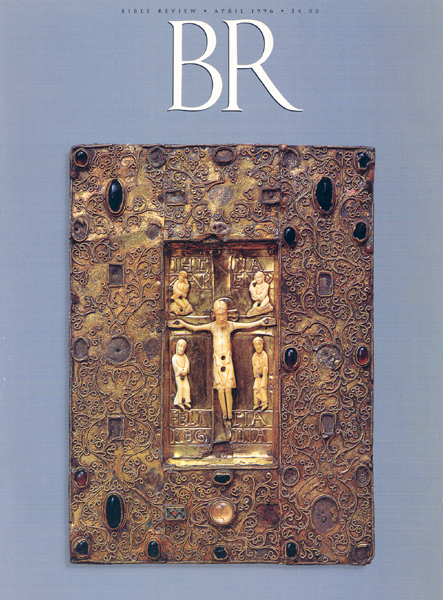Image Details

Copyright 1985 by the Metropolitan Museum of Art/Gift of J. Pierpoint Morgan, 1917 (17.190.33).
ON THE COVER: Knowing that all was finished, Jesus “bowed his head and gave up his spirit,” relates the Gospel of John 19:30. Surrounded by kneeling angels, his mother Mary and the apostle John, the serene Jesus of the Fourth Gospel dominates this delicate ivory crucifixion, attached to a gilded and bejeweled cover for a liturgical manuscript. Bearing the Latin inscriptions “Jesus the Nazarene” and “Queen Felicia,” the book cover may have belonged to Felicia, the consort of the late 11th-century king Sancho Ramirez of Aragon and Navarre.
John’s image of Jesus calmly facing death is only one of four vivid interpretations of the crucifixion presented in the Gospels. Fending off recent attacks on scholars’ attempts to reconstruct Jesus’ history, John Dominic Crossan suggests that the varying versions of Jesus’ life in the Gospels provide a model for Christians as they search for the Jesus of history and then interpret him again and again by their own faith in different times and places. In this issue, Crossan explains “Why Christians Must Search for the Historical Jesus.”
